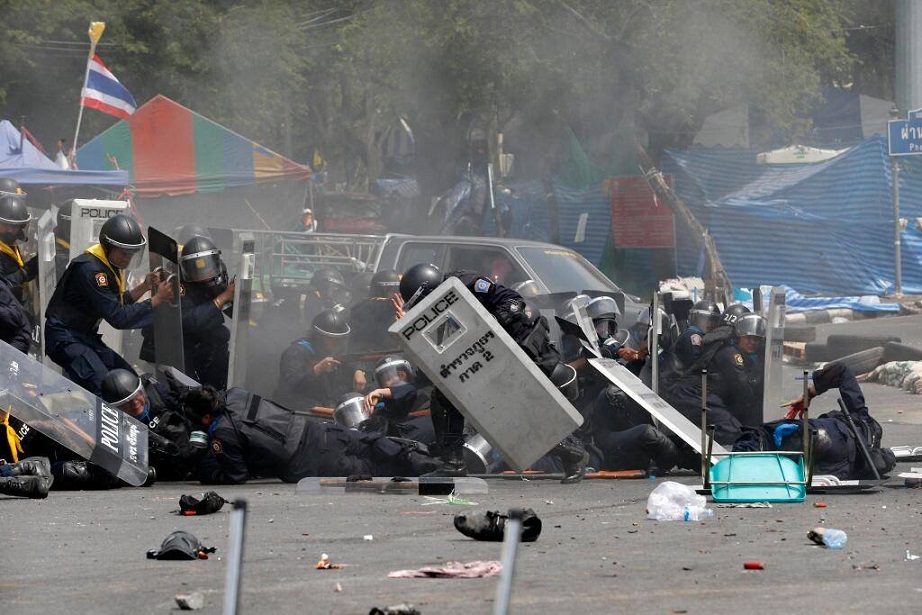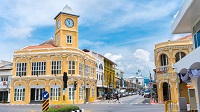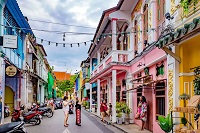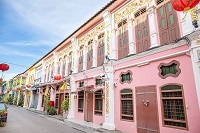
Thai History
Just a little about Thailand’s past that you may or may not have already known.
A very very brief history of Thailand.
Early days
Little is known of Thailand’s earliest inhabitants, but there are archaeological sites in the northeast of the country that contain evidence of rice cultivation and bronze casting that date back 5,000 years. In the early days a succession of tribal groups controlled what we now know as Thailand. The Mon and Khmer peoples established powerful kingdoms that included large areas of the country. These kingdoms came into contact with other South Asian peoples and absorbed their religious, political and cultural ideas as well as their institutions and these later influenced the development of Thailand’s culture and national identity.
The Tai People
The Tai people originally lived in southwest China and migrated into the main part of Southeast Asia over many centuries. The first mention of their existence in the region is a 12th century AD inscription at Angkor Wat, which refers to syam or “dark brown” people as being vassals of the Khmer monarch. This is how Thailand became known as Siam and its people the Siamese.
Sukhothai
In 1238 a Tai chieftain declared his independence from the Khmer and established a kingdom at Sukhothai in the broad valley of the Mae Nam River in the heart of modern day Thailand.
Ayutthaya
Sukhothai was succeeded in the 14th century by the kingdom of Ayutthaya. The kingdom of Ayutthaya became very powerful in the 14th & 15th centuries, so much so that it was able to defeat the kingdom of Angkor in 1431 thereby causing its decline. Over the centuries there were a number of conflicts with the Burmese which came to a head in 1767 when the Burmese invaded Ayutthaya and totally destroyed it. After a couple of years two national heroes, Taksin and Chakri, soon expelled the invaders and reunified the country under the Chakri Dynasty. In 1782, Chakri established his new capital in Bangkok. He was later given the title of Rama I and was the first king of the Chakri dynasty which has held power to this day.
19th Century
During the nineteenth century it was the European powers, rather than Thailand’s traditional enemies, that posed the greatest threat to the kingdom’s survival. Thai success in preserving the country’s independence (it was the only Southeast Asian country to do so) was in part a result of the desire of Britain and France for a stable buffer state between their dominions in Burma, Malaya and Indochina. More significantly though was the willingness of Thailand’s monarchs, Mongkut (Rama IV, 1851-68) and Chulalongkorn (Rama V, 1868-1910), to negotiate openly with the European powers and to adopt European style reforms that modernized the country and won it sovereign status. However Siam, as it was then known, paid a high price for its independence losing control over Cambodia and Laos to France and ceding the northern states of the Malay Peninsula to Britain.
20th Century
As a result of European intervention by 1910 the area of Southeast Asia under Thai control was a fraction of what it had been a century earlier. In the early decades of the twentieth century, Thailand’s political system, armed forces and economy underwent drastic changes. Many wealthy Thais studied overseas and a small, Western educated elite with less traditional ideas emerged. In 1932 a bloodless coup d’etat by military officers and civil servants ended the absolute monarchy and inaugurated Thailand’s constitutional era. Thailand changed its name from Siam in 1949.
The Modern Era
Since the far reaching changes of 1932 progress toward a stable, democratic political system has been erratic. Politics has been dominated by rival military cliques headed by powerful generals. These cliques have caused frequent coups d’etat and have imposed prolonged periods of martial law on the country. Parliamentary institutions, as defined by the fourteen constitutions written between 1932 and 1987, and competition among civilian politicians have generally been facades for military governments. Today the country has a fledgling democracy, watched over by the military and the new king who has just taken over the reins from H.M. King Bhumibol Adulyadej, the 9th King of the Chakri Dynasty, who was the country’s longest reigning monarch until his death in 2016.
Obviously there is a lot more of Thailand’s history than this, and there are many publications available which the reader can follow up on if the desire drives you. I’ll just add that the Portugese had a fair bit of influence in Phuket town, and if you visit the old town you will see many examples of the architecture brought to the city all those years ago.
A word of thanks
I would like to particularly thank bambootravel.co.uk for their (so far) unconfirmed permission to use the section above from their website.



Looking for the best nursewatches.co.uk site 2024 in the world? Buy now High-Quality replica watches for the best price on nursewatches.co.uk website.
Best Omega Replica Watches For Sale.Buy Omega Replica Watches online with cheap price.
Breitling replica show Swiss luxury replica Breitling watch here best cheap price with AAA High quality fake watches.
